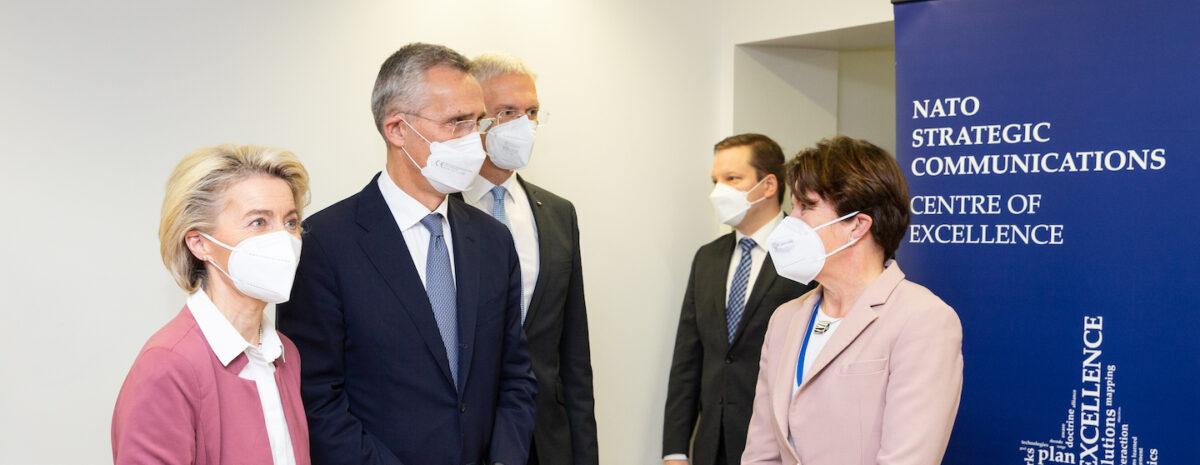During their joint visit to Riga, Latvia on Sunday 28 November 2021, NATO Secretary General Mr Jens Stoltenbergand President of the European Commission Ms Ursula von der Leyen met with Directors of NATO Centres of Excellence and Hybrid CoE.
Mr Jaak Tarien, Director of the NATO Cooperative Cyber Defence Centre of Excellence, Ms Teija Tiilikainen, Director of the European Centre of Excellence for Countering Hybrid Threats (Hybrid CoE), and Mr Janis Sarts, Director of the NATO Strategic Communications Centre of Excellence, briefed the Secretary General and the President on their work to counter hybrid threats in the Euro-Atlantic region. Below is a short briefing note on the occasion by Hybrid CoE Director Teija Tiilikainen.
Hybrid threat operations are part of the ongoing transition of international power structures. With the current balance of political and military power still favouring Western powers, actors such as Russia, China or Iran use ‘unconventional hybrid methods’ to balance shortcomings in their power arsenal. By exploiting vulnerabilities in the political and societal systems of democratic states, they intend not only to weaken their target states, the EU and NATO, but to undermine the whole democratic model. Democratic values are the key target of hybrid threat activities as they are seen to put regime survival in authoritarian states at risk.
The recent trends of hybrid threat operations include systematic interference in democratic elections and election campaigns by manipulating the information environment (using both social media and traditional media channels), and hacking and leaking targeted information in cyberspace. Recently, cyberattacks against the information systems of Western governments and parliaments have been used to exert psychological pressure against democratic institutions.
Second, vulnerabilities in Western states’ critical infrastructures – stemming from critical sea lines of communication, financial systems, GPS navigation systems or critical supply chains – are being exploited to undermine economic and political stability, and weaken public trust in governments. By supporting the operations with an efficient disinformation campaign, the blame for the ensuing crisis is put on Western governments.
Operations using migration as a political instrument against EU and NATO countries are aimed at the very same goal of discrediting the democratic model and undermining the societal security and stability of Western countries. This instrument, which in the context of the 2015 refugee crisis was used to further amplify the effects of the crisis in Norway and Finland, is currently being used to destabilize the political situation in Latvia, Lithuania and Poland, and sow disunity within the EU and NATO. Another goal is to deflect attention away from Belarusian human rights violations against its own civil society.
Even hybrid warfare tools are increasingly being used to intensify pressure against Western states and their systems of collective defence. Snap exercises, violations of Western airspace, or processes of unexplained military build-up increase unpredictability and weaken the situational awareness of Western governments.
Hybrid threat activities require proper policy coordination from EU and NATO members, and solid cooperation between the EU and NATO. The toolboxes of resilience and deterrence should be complemented and made fully operational. The parallel strategy processes – the EU’s Strategic Compass and the New NATO Strategy – provide an excellent opportunity for this.



